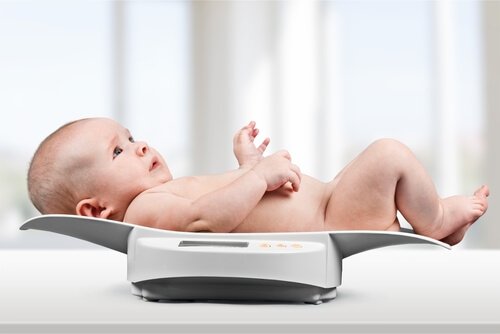What Are Growth Calculators?

Growth calculators are instruments used to measure a child’s development and evaluate it according to certain standards.
A babies’ weight and height even in the prenatal stage, can be a cause for concern for parents. These parameters allow parents to know if their child is developing at the right pace.
Prenatal measurements are also used to anticipate problems and to administer medication when the need arises. For all these reasons, growth calculators have become an essential evaluation tool.
Percentile calculation
Percentiles are undefined measurements that are used to make a comparison of results. Percentiles are widely used in the field of statistics when it comes to evaluating data.
Once data is established, the result is a variable which may be below the percentage accepted as normal or standard.
This is the method that growth calculators are based on. For example, a child’s weight and height indicates where the child stands in relation to others of the same gender and age.
A growth calculator is a tool or method based on the conditions of a healthy child. The ideal percentile is used as a reference to evaluate a child’s development.
How to interpret the results of growth calculators?
Percentiles help compare the development of a child by taking other children of the same age of gender as references.
In other words, if your child is in the 50th percentile when it comes to weight, it means that out of every 100 children, 50% of them weigh less and 50% weigh more. That’s why it’s said that growth calculators have undefined and central margins.
Standard growth calculators can cover a wide range of measurements between 3, 19, 25, 50, 74, 90 and 97. Percentiles in most cases don’t have to be a cause for concern unless the difference with the mean is less than 3 or more than 97.

Growth calculators are simply informative. There are many other physical, medical and even social factors that must be taken into account when evaluating a child.
The World Health Organization has recognized the practical value of the growth calculator. In fact, it’s recommended for doctors during the different stages of a child’s development.
Growth calculator tables
In all of the growth calculator tables accepted by the WHO there are two axes. The horizontal axis is the one that expresses age while the vertical axis expresses weight or height.
These tables all depend on the child’s gender since the physical parameters vary between genders. Tables range from 0-2, 0-5, and 5-19.
“Percentiles help compare the development of a child by using other children of the same age and gender as references.”
For example, let’s analyze an 8-year-old boy who is four feet and three inches tall and weighs 72 pounds. According to the tables the child is in the 85th percentile.
The weight that corresponds to the 85th percentile for an 8-year-old boy is 65 pounds. This means that the child weighs 7.7 pounds more than the rest of the children in the 85th percentile.
The Spanish Association of Pediatric Primary Care considers that a child born at term must measure at least 1 foot 5 inches. The child’s weight shouldn’t be less than 5.5 pounds.

Recommendations
Keep in mind that if you provide your children with a proper diet, you’ll increase their chances of enjoying good health. Your children will be able to achieve the appropriate height, weight and development for their age.
In any case, the most important thing about the percentiles are their relation to each other. It’s important for percentiles to remain similar during the child’s first years.
This proactive tool will allow you to observe your children’s development as they go through different stages.
With the help of a health professional, an optimal life pattern can be created. This will prevent and correct any deficiencies that could put children’s development at risk.
Growth calculators are instruments used to measure a child’s development and evaluate it according to certain standards.
A babies’ weight and height even in the prenatal stage, can be a cause for concern for parents. These parameters allow parents to know if their child is developing at the right pace.
Prenatal measurements are also used to anticipate problems and to administer medication when the need arises. For all these reasons, growth calculators have become an essential evaluation tool.
Percentile calculation
Percentiles are undefined measurements that are used to make a comparison of results. Percentiles are widely used in the field of statistics when it comes to evaluating data.
Once data is established, the result is a variable which may be below the percentage accepted as normal or standard.
This is the method that growth calculators are based on. For example, a child’s weight and height indicates where the child stands in relation to others of the same gender and age.
A growth calculator is a tool or method based on the conditions of a healthy child. The ideal percentile is used as a reference to evaluate a child’s development.
How to interpret the results of growth calculators?
Percentiles help compare the development of a child by taking other children of the same age of gender as references.
In other words, if your child is in the 50th percentile when it comes to weight, it means that out of every 100 children, 50% of them weigh less and 50% weigh more. That’s why it’s said that growth calculators have undefined and central margins.
Standard growth calculators can cover a wide range of measurements between 3, 19, 25, 50, 74, 90 and 97. Percentiles in most cases don’t have to be a cause for concern unless the difference with the mean is less than 3 or more than 97.

Growth calculators are simply informative. There are many other physical, medical and even social factors that must be taken into account when evaluating a child.
The World Health Organization has recognized the practical value of the growth calculator. In fact, it’s recommended for doctors during the different stages of a child’s development.
Growth calculator tables
In all of the growth calculator tables accepted by the WHO there are two axes. The horizontal axis is the one that expresses age while the vertical axis expresses weight or height.
These tables all depend on the child’s gender since the physical parameters vary between genders. Tables range from 0-2, 0-5, and 5-19.
“Percentiles help compare the development of a child by using other children of the same age and gender as references.”
For example, let’s analyze an 8-year-old boy who is four feet and three inches tall and weighs 72 pounds. According to the tables the child is in the 85th percentile.
The weight that corresponds to the 85th percentile for an 8-year-old boy is 65 pounds. This means that the child weighs 7.7 pounds more than the rest of the children in the 85th percentile.
The Spanish Association of Pediatric Primary Care considers that a child born at term must measure at least 1 foot 5 inches. The child’s weight shouldn’t be less than 5.5 pounds.

Recommendations
Keep in mind that if you provide your children with a proper diet, you’ll increase their chances of enjoying good health. Your children will be able to achieve the appropriate height, weight and development for their age.
In any case, the most important thing about the percentiles are their relation to each other. It’s important for percentiles to remain similar during the child’s first years.
This proactive tool will allow you to observe your children’s development as they go through different stages.
With the help of a health professional, an optimal life pattern can be created. This will prevent and correct any deficiencies that could put children’s development at risk.
This text is provided for informational purposes only and does not replace consultation with a professional. If in doubt, consult your specialist.








